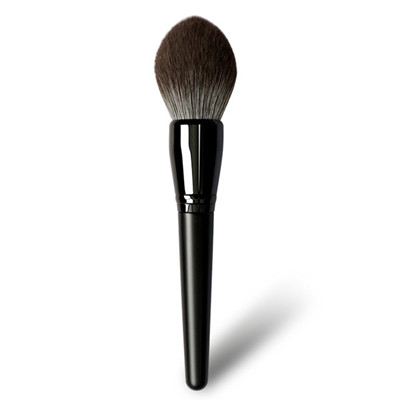1. Dealing with the core challenges of the European and American market
Breaking through tariffs and trade barriers
- Transferring production bases: Setting up branches in Southeast Asia (Vietnam, Cambodia) or Eastern Europe (such as Poland and Turkey), and taking advantage of local tariff preferences for exports to Europe and the United States.
- Semi-finished makeup brushes + local assembly” model: Exporting semi-finished makeup brushes to Mexico or Eastern Europe, and completing final assembly locally to circumvent the restrictions of US rules of origin.
- Applying for tariff exemptions: Striving for exemptions from the US “Section 301” for specific products (such as makeup brushes made of environmentally friendly materials).
Strengthening compliance and certification
- European and American regulatory priorities: Ensure that makeup brushes pass mandatory certifications such as EU REACH (chemical safety), US FDA (direct skin contact certification), and CFDA (China’s new version of cosmetics regulations).
- Ethical and environmental labels: Obtain labels such as Vegan, Cruelty-Free, and FSC (Sustainable Forest Certification) to meet the value needs of European and American consumers.
2. Accurately match the needs of the European and American markets
Product strategy upgrade
- High-end and professional: Launch customized makeup brushes (such as antibacterial bristles, ergonomic handles), brush sets (such as the "Environmentally Friendly Artist Series") for professional makeup artists and makeup enthusiasts in Europe and the United States.
- Segmented scene needs: Develop synthetic fiber brushes for sensitive skin, high-reflective shooting brushes for YouTube bloggers, etc.
- Sustainable innovation: Use recycled aluminum brush handles, bio-based nylon bristles, and even launch a "replaceable brush head" design to cater to the circular economy trend.
Optimize localized services
- Quick response for small orders: Establish local warehouses in Europe/USA to support 48-hour delivery of small batch orders (such as through Amazon FBA or cooperation with ShipBob).
- Design close to European and American aesthetics: Set up design centers in Europe and the United States or cooperate with local designers to avoid cultural barriers (such as Europe and the United States prefer matte metallic colors rather than Chinese style).
- Provide value-added services: Develop teaching videos and social media material packages (such as TikTok short video templates) for brand customers to reduce customer marketing costs.
3. Reconstructing the supply chain and cost structure
Building supply chain resilience
- Dual-source procurement: Key raw materials (such as high-quality goat hair and synthetic fibers) are purchased from both Chinese and European suppliers to reduce the risk of supply interruption.
- Digital supply chain management: Introducing ERP and IoT technologies to track European and American inventory and order dynamics in real time to avoid unsalable or out-of-stock products.
Cost optimization path
- Automation replaces manual labor: Introduce AI quality inspection equipment (such as visual recognition and sorting of defective bristles) and robotic arm assembly lines to offset the labor cost advantage in Southeast Asia.
- Light asset overseas: Cooperate with overseas local OEM factories (such as Italian brush workshops) to reduce the risk of heavy asset investment through the "technology authorization + quality control output" model.
4. Transformation from OEM to branding
OEM/ODM upgrade strategy
- Binding with top brands: providing exclusive design + production services for high-end brands in Europe and the United States (such as Sigma, Morphe), and establishing long-term cooperative relationships.
- "White label + private label" in parallel: incubating private brands while OEM, focusing on the DTC (direct to consumer) model in the early stage.
Brand marketing breakthrough
- Social media : Cooperating with European and American beauty KOLs on Instagram and YouTube, emphasizing "professional makeup tools" and environmental protection concepts.
- Crowdfunding platform verification market: launching limited editions through Kickstarter, testing product popularity and accumulating seed users.
- Offline channel penetration: entering chain stores such as Ulta Beauty and Sephora, or cooperating with European and American professional beauty academies.
5. Make use of policies and ecological resources
Use of policy dividends
- Cross-border e-commerce policies: Obtain traffic support through Alibaba International Station and Amazon Brand Accelerator Program.
- Regional Free Trade Agreement: Use the RCEP framework to import raw materials from ASEAN and export them to Europe and the United States to reduce overall costs.
Ecosystem cooperation
- Cross-border collaboration: Collaborate with European and American artists and environmental organizations (such as the "Ocean Protection Series") to increase brand premium.
- Join industry alliances: Participate in the international zero-cruelty organization (Leaping Bunny) or sustainable beauty initiatives to enhance credibility.
6. Long-term risk management
- Market diversification: gradually explore alternative markets such as Central and Eastern Europe (Poland, Czech Republic) and Latin America (Mexico, Brazil) to reduce dependence on a single region.
- Legal risk plan: hire local compliance consultants in Europe and the United States to respond to potential anti-dumping investigations or intellectual property disputes in advance.
Chinese makeup brush factories with Europe and the United States as their core markets need to shift from "cost-driven OEMs" to "value-driven service providers" and build global risk resistance capabilities while maintaining the European and American base through compliance upgrades, product innovation, supply chain resilience, and brand penetration. The key lies in:
Close to customer needs (such as environmental protection, fast delivery);
Technology-enabled costs (automation + digitalization);
Branding premium (upgrade from tool supplier to beauty solution provider).







